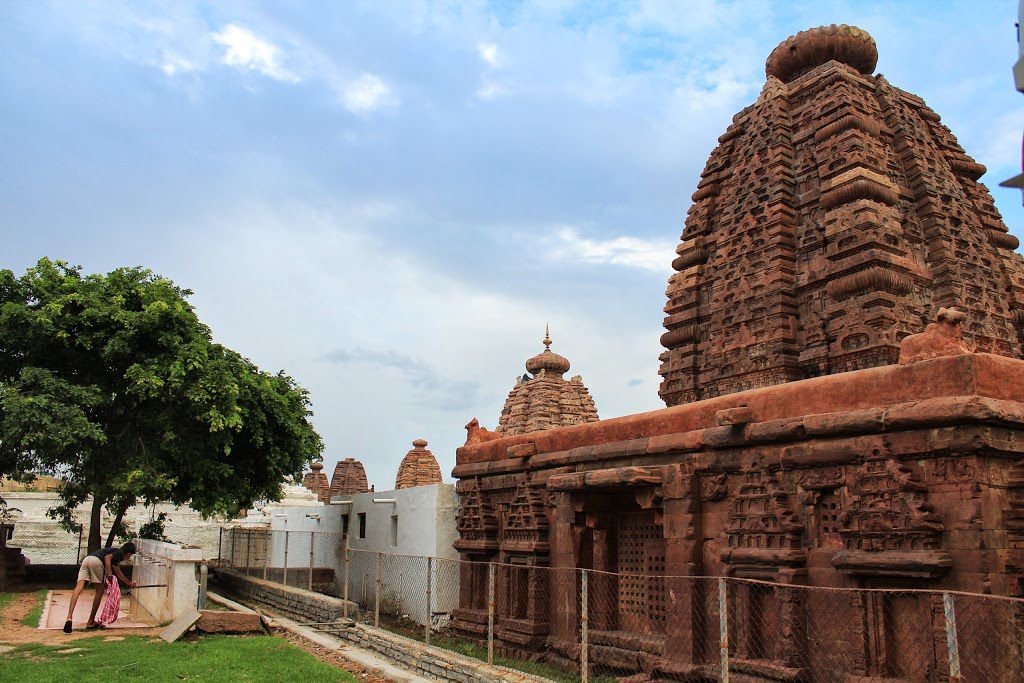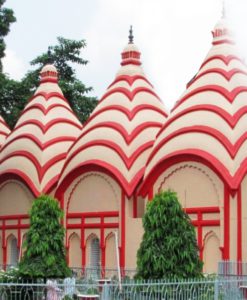No products in the cart.
Alampur Jogulamba Temple
Alampur is a sleepy town situated on the banks Tungabhadra River, in the state of Telangana. Alampur is considered as the western gateway of Srisailam. Here the marvelous temple and remains of some ancient temple signify Badami Chalukyan architecture. The region was ruled by many South Indian dynasties. The principal deities at the Jogulamba temple are Jogulamba and Balabrahmeshwara. Goddess Jogulamba is considered the 5th Shakti Peetha among 18 shakti peetams in the country. Here Goddess Jogulamba is seen seated on the Corpse with scorpion, frog, and lizard on the head. She is seen in a naked avatar with her tongue stretched outside, an avatar of fierce goddess that grants Siddhi in Yoga and hence called Jogulamba. This word is a changed form of Yogula Amma in Telugu which means Mother of Yogis.
- Temple History
- Architecture
- How To Reach The Temple
- Daily Poojas And Festivals
- Videos
- Additional Information
According to a popular legend there was a great saint in 6th century called Rasa Siddha who had the power to convert base metal into gold and he was considered close to chalukya king Pulakesi II, instrumental in constructing any temples called ‘Nava Brahmas’. According to the legend, the nine names of Siva are actually the names of medicinal herbs put forth by Rasa Siddha and there are nine temples here. They are the Swarga Brahma Temple Padma Brahma Temple, Vishva Brahma Temple Arka Brahma Temple, Bala Brahma Temple, Garuda Brahma Temple, and Taraka Brahma Temple. The Siddha Rasarnavam is a tantric work, which states that if upasana is performed as per the prescribed Tantra, then Mercury oozes from the Linga of Bala Brahma, Thighs of Subramanya, Navel of Ganapati, and Mouth of Mother Jogulamba, which can be converted into Gold by using the medicinal herbs.
 Jogulamba temple is located in the South-East corner of the village beside Tungabhadra river. Old temple of Jogulamba was destroyed by Bahamani sultans in the 14th century. The idols of Jogulamba and her two shaktis Chandi, Mundi were protected from them and placed in Bala brahmeswara swammy temple until 2005. The new temple constructed in the same place and the goddess was relocated. As per the local people Jogulamba is an Ugra rupa (highly energetic and hard to worship) and the water pool nearby it makes the atmosphere cool.
Jogulamba temple is located in the South-East corner of the village beside Tungabhadra river. Old temple of Jogulamba was destroyed by Bahamani sultans in the 14th century. The idols of Jogulamba and her two shaktis Chandi, Mundi were protected from them and placed in Bala brahmeswara swammy temple until 2005. The new temple constructed in the same place and the goddess was relocated. As per the local people Jogulamba is an Ugra rupa (highly energetic and hard to worship) and the water pool nearby it makes the atmosphere cool.
Idol of Jogulamba is in sitting position has huge amount of hair with lizard, scorpion, bat and a human scull in it. Idols of Saptamatrikas, Vighneswara and Veenapani veerabhadra are also present. Original Chandi Mundi idols were left in Bala brahmeswara swammy temple and new idols are made and placed in Jogulamba temple.
Alampur is called as City of Temples and famous for their sculpture. The entire temple complex was built on the bank of Tungabhadra river. Temple of Nava brahmas and Kanchi Kamakshi are most important.
By Road: Alampur is a temple-town situated in Mahbubnagar district, in the state of Telangana, India. It is located at about 90 km from Mahabubnagar, 27 km From Kurnool and 200 km from Hyderabad. The Andhra Pradesh State Transport Corporation (APSRTC) and Telangana State Transport Corporation (TSRTC) run regulars bus services to the temple.
By Rail: The nearest Railway Station to the temple is Mahbubnagar railway station.
By Air: The Temple can be reached through nearest Hyderabad International Airport which is well connected with regular domestic flights to Delhi, Mumbai.
Alampur Jogulamba Temple
This temple Opening & Closing times is 07:00 AM – 01:00 PM, 02:00 PM – 08:30 PM. During this period major part of the Goddess Kali rituals are performed. Archana, Aarti and Abhisekham are the daily pujas performed.
The Yogamba (Jogulamba) temple is regarded as a Shakti Peetha where Sati Devi’s upper teeth fell. The mythology of Daksha yagaand Sati’s self immolation is the story of origin of Shakti Peethas.
Shakti Peethas are shrines which are the most divine seats of the Mother Goddess. The body parts of the corpse of Sati Devi has fallen in these places, when Lord Shiva carried it and wandered throughout Aryavartha in sorrow. There are 51 Shakti Peeth linking to the 51 alphabets in Sanskrit.









